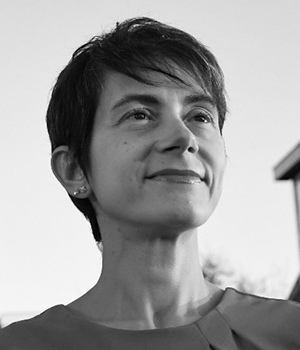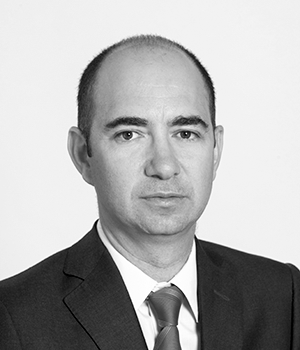This special issue of the International Journal of Microwave and Wireless Technologies hosts an extended version of selected papers presented at the 14th edition of the European Conference on Antennas and Propagation (EuCAP), which was planned from the 15th to the 20th of March 2020 in Copenhagen.
This EuCAP edition is very special because it was the first conference in the field of microwaves and antennas that had to be converted to a fully virtual event just one week before the opening, because of the lockdown imposed worldwide by the outbreak of the Corona pandemic. This was a major setback for the 1500+ participants, the 50+ exhibitors, and the 25+ supporting sponsors all ready to convene in Copenhagen. Thanks to the tremendous efforts of the EuCAP Conference Organizing Committee and the EurAAP Board, EuCAP2020 was successfully converted to an online event. The conference included 1229 accepted papers, selected through a rigorous peer review process from the 1543 submitted papers. The conference papers were available on-line, and for more than 85% of these video presentations prepared by the authors also became available on-line. The competition for best papers were conducted on-line, with presentation of 5 finalist papers in each of 5 categories, as were 5 short courses and 6 industrial workshops; some of which attracted more than 100 participants. Also, all awards were announced on-line. EuCAP 2020 became the first on-line EuCAP and much useful experience about the challenges and opportunities for on-line conferences were obtained in those hectic weeks.
EuCAP is organized by the European Association on Antennas and Propagation (EurAAP), created in 2006 to give a common voice to the European antenna and propagation scientific community. The Association brings together enterprises, academia, local societies, scientists, and engineers in Europe, is active in education and dissemination, through the European School of Antennas (ESoA) and promotes the collaboration with other international societies and institutes in the field of antennas and propagation (for more information please visit www.euraap.org).
The cooperation between EurAAP and the European Microwave Association (EuMA), dates back to the early days of EurAAP establishment. A Memorandum of Understanding is in place and a Joint Committee has been created in 2019 to further increase the interactions and foster collaborative actions between EuMA and EurAAP.
In the frame of this cooperation, EurAAP has been invited, this year for the fifth time, to compose a guest issue of the International Journal of Microwave and Wireless Technology with a selection of highly ranked contributions presented at the 2020 edition of EuCAP, covering topics that are interesting for a broader microwave community. The authors were invited to submit to the journal an extended version of the conference paper, which underwent a regular review process.
Although EuCAP mainly covers advances in antenna technologies and propagation, we share with EuMA and the IJMWT readers the same passion and fascination for microwaves. We hope with this special issue to inspire the reader with new ideas and foster scientific collaborations. Six papers have been selected for this issue, covering all the EuCAP areas: Antenna theory and design, RF Measurements, Propagation and Electromagnetics. These papers also belong to different application tracks of our conference: “Development of a Millimeter-Wave Transparent Antenna inside a Headlamp for Automotive Radar Application” and “Experimental Comparison of Absorber and Conductive Floor Automotive Near Field Antenna Measurement Systems” are advanced topics for automotive applications; “Directive mmWave Radio Channel Modelling in a Ship Hull” presents propagation analysis in ships and “Cost-Effective Millimeter-Wave Measurement Setup for Narrowband Path Loss and Angle-of-Arrival Measurements: Uncertainty Analysis and Specular Building Reflection Measurements” introduces non line-of-sight propagation study for last generation of 5 G applications; “Telemetry Antennas Withstanding Very High Accelerations and Centrifugal Forces” presents some new antennas for telemetry; “Determining the Nominal Body Contour Image Using Wideband Millimeter-Wave Radar for Characterizing Person-Worn Threats” presents an interesting application for security.
We would like to thank the authors, the reviewers, the editorial team of the journal, and particularly the Editor in Chief of IJMWT for their kind invitation and support.
Enjoy!
 Stefania Monni (IEEE SM) was born in Cagliari, Italy, in 1974. She obtained her MSc. in Electronic Engineering in 1999 from the University of Cagliari, Italy, and her Ph.D. in Electrical Engineering in 2005 from the Technical University of Eindhoven, The Netherlands. Between 1999 and 2000 she was with the European Space Agency ESA–ESTEC, The Netherlands, as Young Graduate Trainee on interferometry and polarimetry techniques for Synthetic Aperture Radar.
Stefania Monni (IEEE SM) was born in Cagliari, Italy, in 1974. She obtained her MSc. in Electronic Engineering in 1999 from the University of Cagliari, Italy, and her Ph.D. in Electrical Engineering in 2005 from the Technical University of Eindhoven, The Netherlands. Between 1999 and 2000 she was with the European Space Agency ESA–ESTEC, The Netherlands, as Young Graduate Trainee on interferometry and polarimetry techniques for Synthetic Aperture Radar.
Currently, she is Senior Scientist at the Radar Technology department of TNO, The Netherlands, and she leads the Antenna Team, where she is responsible for the technical coordination of the research activities and the long term strategy. Next to this, since 2019 she is also with the Chip Integration Technology Centre, in Nijmegen, The Netherlands, as Senior Scientist of the Program on Antennas in Package.
Her research interests include active array antennas and periodic structures, filters and advanced manufacturing technologies.
Dr. S. Monni is currently Chair of the Board of Directors of the European Association of Antennas and Propagation (EurAAP). She is one of the initiators of the Joint Committee between EurAAP and the European Microwave Association (EuMA).
She has over 70 publications, including journals, peer reviewed conferences, book chapters and patents. She was co–recipient of the Best Innovation Award from the European Space Agency in 2018.
 Manuel Sierra Castañer was born in 1970 in Zaragoza (Spain). He obtained the degree of Telecommunication Engineering in 1994 and the Ph.D. in 2000, both from the Technical University of Madrid (UPM) in Spain. He worked for the cellular company Airtel from 1995 to 1997. Since 1997, he worked in the University “Alfonso X” as an assistant, and since 1998 at Technical University of Madrid as a research assistant, an assistant, an associate professor, and finally a Full Professor since 2017. He has been a visitor researcher in Tokyo Tech (September-December 1998) and EPFL (September-December 1999) during his Ph.D. and a visitor Professor in Tokyo Tech during the summers of 2012 and 2013. Currently, he is a Senior member of the IEEE and Fellow of AMTA Society. His current research interests are in planar antennas and antenna measurement systems. Dr. Sierra-Castañer obtained the IEEE APS 2007 Schelkunoff Prize Paper Award for the paper “Dual-Polarization Dual-Coverage Reflectarray for Space Applications” in 2007 and other awards for papers in conferences. He has been an AMTA Europe Liaison since 2015 until the end of 2019. Since January 2016 until end of 2018, he has been member of the EurAAP board of directors, and since January 2019 until end of 2021, vice-chair. Currently, he is dean of the Telecommunication School of Technical University of Madrid.
Manuel Sierra Castañer was born in 1970 in Zaragoza (Spain). He obtained the degree of Telecommunication Engineering in 1994 and the Ph.D. in 2000, both from the Technical University of Madrid (UPM) in Spain. He worked for the cellular company Airtel from 1995 to 1997. Since 1997, he worked in the University “Alfonso X” as an assistant, and since 1998 at Technical University of Madrid as a research assistant, an assistant, an associate professor, and finally a Full Professor since 2017. He has been a visitor researcher in Tokyo Tech (September-December 1998) and EPFL (September-December 1999) during his Ph.D. and a visitor Professor in Tokyo Tech during the summers of 2012 and 2013. Currently, he is a Senior member of the IEEE and Fellow of AMTA Society. His current research interests are in planar antennas and antenna measurement systems. Dr. Sierra-Castañer obtained the IEEE APS 2007 Schelkunoff Prize Paper Award for the paper “Dual-Polarization Dual-Coverage Reflectarray for Space Applications” in 2007 and other awards for papers in conferences. He has been an AMTA Europe Liaison since 2015 until the end of 2019. Since January 2016 until end of 2018, he has been member of the EurAAP board of directors, and since January 2019 until end of 2021, vice-chair. Currently, he is dean of the Telecommunication School of Technical University of Madrid.



